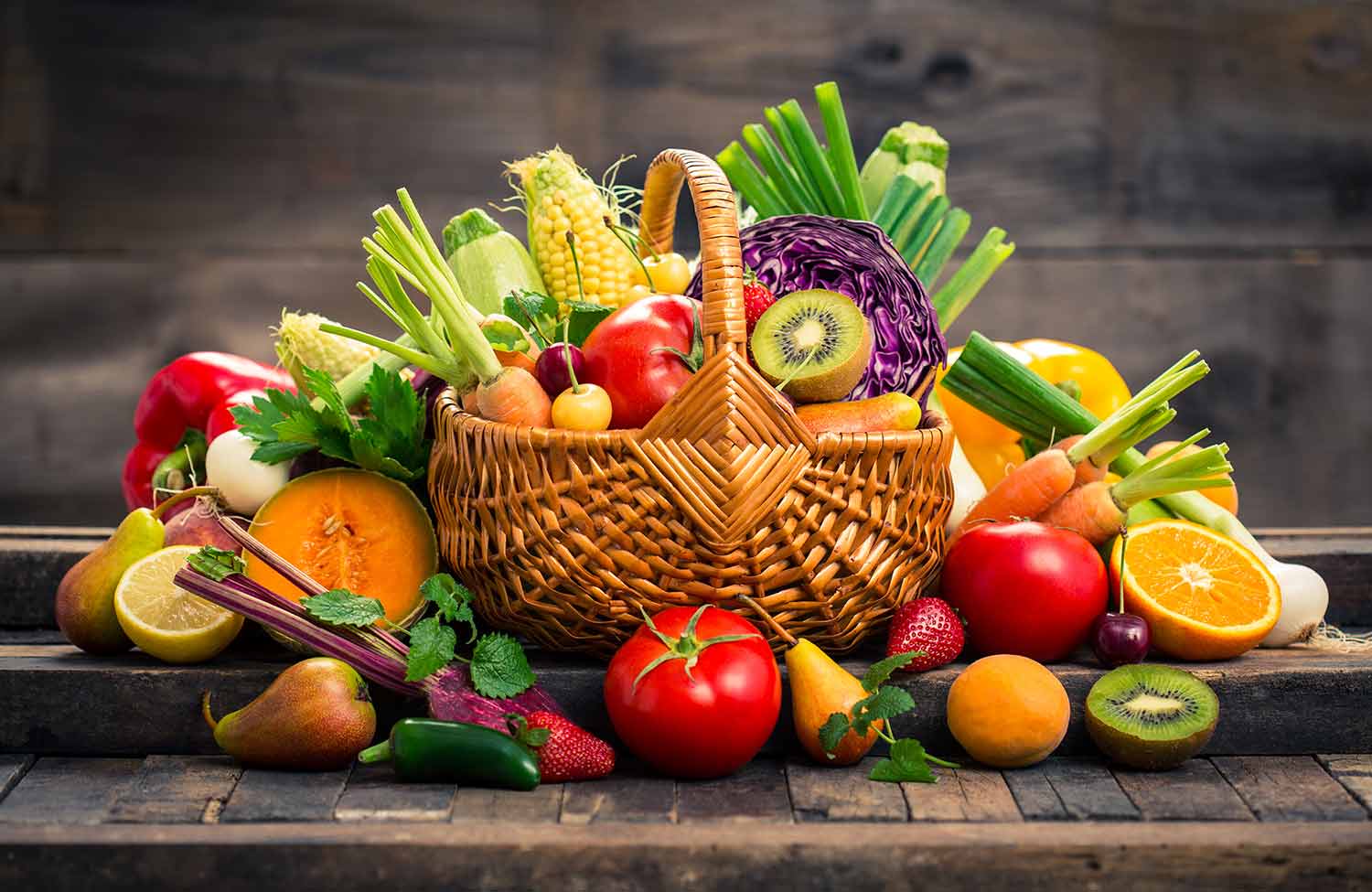Fermented foods, proper portion sizes, and strategic approaches to increasing your produce consumption can significantly improve your gut health. Discover practical strategies to overcome common challenges and maximize the benefits of fruits and vegetables in your diet.
Fermented Fruits and Veggies
Fermented foods are widely recognized as superstars for gut health. The fermentation process involves microorganisms like bacteria and yeast breaking down sugars and starches in food, resulting in the production of probiotics – live beneficial bacteria. While many types of foods can be fermented, numerous popular and highly beneficial options are plant-based, primarily involving vegetables.
Consuming fermented foods directly introduces these beneficial microbes into your gut, potentially improving the balance and diversity of your existing microbiome. Some excellent gut-friendly fermented vegetable options include:
- Sauerkraut (fermented cabbage), a traditional food in many cultures
- Kimchi (a spicy Korean dish of fermented vegetables, typically napa cabbage and radishes)
- Pickles (cucumbers fermented in brine, not just vinegar)
- Fermented carrots, beets, or other root vegetables
- Some traditional bean preparations that involve fermentation, enhancing their digestibility
These foods offer more than just probiotics; they also provide unique, tangy, and complex flavors that can enhance your meals. Additionally, the fermentation process can sometimes make nutrients in vegetables more bioavailable. When choosing fermented foods, look for products that state they contain live and active cultures.
How Much Should You Eat?
General dietary guidelines often recommend consuming at least five servings of fruits and vegetables per day for good health. However, for optimizing gut health specifically, many experts suggest aiming for even more—up to 7-10 servings daily—to provide greater benefits. This higher intake ensures a more substantial supply of fiber, prebiotics, and polyphenols to nourish your microbiome.
A standard serving size is typically considered to be:
- One cup of raw leafy vegetables
- Half-cup of other raw or cooked vegetables or fruit
- A medium apple or similar-sized piece of fruit
- Quarter cup of dried fruit (consume in moderation due to higher sugar concentration)
Remember, variety is just as important as quantity; try to include different types and colors of produce throughout your week to maximize the range of nutrients.
While fruit juices can contribute to your fruit intake, they often lack the beneficial fiber found in whole fruits and can be high in sugar. Therefore, it’s generally better to eat fruits whole. Achieving a high intake of diverse produce supports not only gut health but also aids in maintaining a healthy weight and provides ample energy for physical activity.
Tips for Boosting Your Intake
If you’re not accustomed to eating a large volume of fruits and vegetables, significantly increasing your intake might seem challenging. However, with a few simple strategies, you can gradually and easily incorporate more produce into your daily routine. Making small, consistent changes is key to long-term success.
Here are some practical tips to help boost your fruit and vegetable consumption:
Start your day with fruit: Add berries, sliced bananas, or chopped peaches to your breakfast cereal, oatmeal, or yogurt.
Make healthy snacks: Keep raw vegetables like carrot sticks, cucumber slices, and bell peppers handy for snacking, perhaps with hummus or a yogurt-based dip. Whole fruits like apples, pears, or oranges are also excellent portable snacks.
Incorporate into every meal: Aim to include at least one serving of vegetables or fruit with lunch and dinner. A side salad, steamed vegetables, or a piece of fruit can make a big difference.
Utilize vegetable-based sauces and dips: Choose tomato sauce, pesto (made with basil and pine nuts), or salsa as bases for your meals.
Blend them into smoothies: Smoothies are a fantastic way to pack in multiple servings of fruits and leafy greens like spinach or kale. You can also add sunflower kernels for extra nutrients.
Experiment with new recipes: Look for recipes where vegetables are the main content of the dish, such as vegetable stir-fries, hearty soups, or stuffed peppers.
Prep ahead: Wash and chop vegetables like green onions or bell peppers when you get them from the store, so they are ready to add to meals or snacks.
Remember that every extra serving counts. Begin by adding just one additional serving of fruits or vegetables to your day and gradually build up from there. Over time, these small adjustments can lead to significant improvements in your fiber intake and overall nutrition.
Potential Challenges
While fruits and vegetables are overwhelmingly beneficial for most people, rapidly increasing your intake, especially of high-fiber varieties, can sometimes lead to digestive discomfort. This often happens because the body and gut microbiome need time to adjust to processing larger amounts of fiber. Symptoms like bloating, gas, or changes in bowel movements can occur temporarily.
If you experience such discomfort, consider these strategies to help your body adapt:
Increase your intake gradually: Add only one extra serving of fruits or vegetables every few days to allow your digestive system to adjust.
Cook your vegetables: Cooked vegetables are often easier to digest than raw ones, especially cruciferous vegetables like broccoli, cauliflower, and green cabbage, or fibrous ones like brussels sprouts. Steaming or roasting can break down some of the tougher fibers.
Stay well-hydrated: Drinking plenty of water is crucial when increasing fiber intake, as water helps fiber move through your digestive system smoothly and can prevent constipation.
Chew thoroughly: Proper chewing breaks down food into smaller particles, making it easier for your digestive enzymes to work.
Monitor blood sugar: While fruits are healthy, those monitoring blood sugar should be mindful of portion sizes and types of fruit, spreading intake throughout the day.
If digestive problems persist despite these measures, or if you have a pre-existing digestive condition, consulting with a healthcare provider or a registered dietitian is advisable. They can offer personalized advice and help identify any specific fruits or vegetables that might be causing issues.
Beyond the Gut: Other Health Benefits
While this discussion has centered on the profound benefits of fruits and vegetables for gut health, their positive impacts extend far beyond the digestive system. A diet rich in a variety of produce offers a wide spectrum of health advantages, contributing significantly to overall well-being and the prevention of chronic disease.
Heart Health: Eating plenty of fruits and vegetables can help lower the risk of heart disease and manage high blood pressure. Nutrients like potassium, magnesium, and fiber, along with various phytochemicals, support heart health by regulating blood pressure, reducing cholesterol, and improving blood vessel function. Sweet potatoes, leafy greens, and citrus fruits are particularly beneficial for cardiovascular wellness.
Cancer Prevention: Consuming a diet abundant in fruits and vegetables is linked to a reduced risk of certain types of cancer. Antioxidants and other plant compounds can protect cells from damage that may lead to cancer. Clinical trials and observational studies from bodies like the National Cancer Institute have highlighted the protective effects of produce, with cruciferous vegetables and dark green leafy vegetables often cited for their anti-cancer properties, including a potential reduction in breast cancer risk.
Weight Management: These foods are instrumental in healthy weight management and can support weight loss efforts. Their high fiber and water content contribute to satiety, helping you feel full on fewer calories. This makes it easier to manage portion sizes and overall caloric intake, which is a cornerstone of effective and sustainable weight loss when combined with regular physical activity.
Skin Health: The vitamins and antioxidants in fruits and vegetables contribute to healthier skin by combating oxidative stress.
Brain Function: These nutrients can boost brain function, protecting against age-related cognitive decline.
Physical Performance: For athletes or those engaged in regular physical activity, the carbohydrates in fruits provide energy, while various minerals support muscle function and recovery. The array of valuable nutrients found in items from bell peppers to lima beans and even chili peppers contributes to this wide range of benefits.
Conclusion
By making a conscious effort to include a wide variety of colorful produce—such as sweet potatoes, leafy greens, and berries—in your daily meals, you are not just feeding yourself; you are cultivating the trillions of microscopic allies within your gut.
Embracing a diet rich in plant-based foods helps maintain good digestive health, can assist in achieving a healthy weight, and plays a role in reducing the risk of high blood pressure and other chronic conditions.
So, the next time you plan your meals or visit the grocery store or local farmers market, make it a point to fill your cart with nature’s gut-friendly offerings. Your microbiome, and indeed your entire body, will be grateful for the support in helping you eat fruits and vegetables for better health.








